When choosing a Persian or Oriental rug, there are several factors to consider, such as the design, color, and material. However, pile thickness is an essential aspect that is often overlooked. Pile thickness refers to the height of the pile, which can significantly affect the look and feel of the rug.
In this article, we will delve into the details of pile thickness and provide recommendations to help you choose the best option for your needs.
Table of Contents
What is Rug Pile?
The practical benefit of choosing a 100% hand-knotted rug is its materials. Wool rugs are highly durable. The pile is thick, strong, and tough.
Pile refers to the surface, or “face” of a rug. It is made up of knots, which may later be cut or left alone.
The pile of a rug can range from low to medium to high.
Pile height refers to the wool or silk or other material that rise from the foundation of the rug. The pile makes up the surface or face of the rug and its height is directly proportional to the height of the rug. It affects how a rug feels under your hands or feet, and it also affects how easy (or difficult) it may be to clean your rug.
While all rug buyers take great care to make sure they are choosing a rug of the right length and width for their space, many overlook the pile height. However, this is an important feature to take into consideration as it can affect many aspects, from the look it creates to the maintenance and durability.
When measuring pile height, you only take into consideration the visible knots from the surface to the tip of the pile.
Understanding How the Pile is Created
The pile of a rug is created by knotting individual strands of yarn onto a foundation. The foundation is set up on a loom, and the pile is knotted onto it, knot by knot. Weavers cut the pile as they create each knot through the foundation. After about every two inches of knots they create, they cut the pile. Once the weaving is completed, the rug is removed from the loom, and the pile is trimmed to make it even.
Factors that Affect Pile Thickness
Several factors can affect the pile thickness of a rug, such as the knot density, pattern, and wool quality. The higher the knot density, the more the pile is trimmed to show the design.
On the other hand, the lower the knot density, the less the pile is trimmed, resulting in a thicker pile. The lower the knot density, the thicker the wool used, which creates a thicker pile.
Additionally, double-wefted rugs are thicker and denser piles.
3 Pile Height Categories
1. Low Pile – This category includes all rugs with a pile height of ¼ inch or less. Silk Persian rugs and some antique Persian rugs almost always have a very low pile.
The biggest benefit of low pile rugs is they tend to accumulate less debris and are easier to vacuum and clean.
2. Medium Pile – Rugs with a pile height between ¼ inch and ½ inch are categorized as medium pile.
Rugs with medium pile height add a warm, cozy touch to the space while still being relatively easy to maintain.
3. High Pile – This category includes all rugs with a pile height of ½ inch to ¾ inch. Persian rugs rarely have piles longer than ¾ inch.
These rugs look and feel warm, comfortable and luxurious. They will instantly elevate any space where they are placed. However, they trap dirt and debris more easily and are harder to maintain and keep clean.
What to Consider When Choosing Pile Thickness
Choosing the right pile thickness depends on various factors, such as your preference, the room’s usage, and the care required. For instance, high-pile rugs provide a cozy and warm feeling, making them ideal for bedrooms.
On the other hand, low-pile rugs are easier to walk on and have a sharper pattern. It is better to use a medium to high pile rugs for heavy traffic areas to withstand the usage, while low pile rugs are recommended for areas with door clearances.
Usage
Think about where you intend to place the rug. Ideally, choose a high pile rug for high traffic areas and for placing under heavy furniture.
Medium pile rugs are a great choice for the bedroom, dining, living room, hallways and kitchen.
Low pile rugs need more careful handling and should be placed preferably in low traffic areas and spaces where no heavy furniture will be placed on top of the rug. Also they work well in rooms where you expect high humidity as they are easier to dry.
Care and Durability
It’s important to consider how much time you have to look after your rug. Rugs with lower pile height require less care and maintenance as compared to high pile rugs. If you have a busy schedule or young kids and pets, a lower pile rug may be a better fit for your lifestyle.
The high pile is also better able to withstand the wear and tear that kids and pets may subject them to. A low pile rug may be more suitable to lesser used areas of your home.
Aesthetics
Of course, when buying a Persian rug, you don’t want to overlook the aesthetics and only focus on the practical aspects.
Aesthetics is a highly individual preference. Some homeowners may like the smoother look of a rug with low pile height while others may prefer the more luxurious and cozier look of a rug with high pile height.
You should definitely take your aesthetic preference into consideration when making the final decision regarding pile height.
Pile Thickness and Type of Room
While you can use any pile thickness in any room, some guidelines can help you choose the best option.
For instance, consider medium to high pile rugs in living rooms, hallways, and entryways that expect heavy traffic. Medium to high pile rugs is also recommended for bedrooms and dining rooms with heavy furniture.
Low-pile rugs are recommended for bathrooms because they are easier to dry due to the high humidity.
Which Pile is Better – High or Low?
There is no one length that is best for everyone. All three types of pile have their benefits as well as their downfalls.
If you prefer low-maintenance rugs that are easy to clean with a vacuum you should look for low-pile, because its fibers are trimmed quite short and it is easier for the vacuum to suck up any dirt or debris before it settles in.
If you don’t mind a little extra maintenance but want softness and warmth, you may prefer a medium or high-pile rug, as these tend to be warmer, and feel much better under the hands and feet. These will need a deeper suction from a vacuum, as the fibers are longer, and dirt or dust may be easily trapped down near the ends closest to the floor.
Pile height is only one of several factors you should consider when buying an Oriental rug. You also want to make sure that it is in the style, color, and shape that will stand out and make a style statement in your home.
How is Pile Thickness Measured
To measure the pile thickness of a rug, you can take a ruler and measure the average thickness of the rug from the back to the top of the pile. At Catalina Rug, we categorize rugs into four categories based on pile thickness:
- High Pile (1/2” – 5/8”)
- Medium Pile (1/3” -3/8”)
- Low Medium Pile (1/4” – 1/3”)
- Low Pile (1/8”-1/4”)
Are Low Pile Persian Rugs Cheaper Than High Pile Rugs
Not necessarily. There are a number of factors that go into determining the price of a Persian rug but pile height is not one of them. This is because low pile height doesn’t equate to lower quality.
The height of the pile depends on the type of rug. Some types of rugs have a higher pile height while others have a lower pile height. It’s just a feature of the rug and has nothing to do with quality.
For example, silk rugs are among the highest quality Persian rugs you can buy but they don’t have a high pile. Silk rugs almost always have a very low pile. This is for two reasons. The lower pile height helps the patterns to be more defined. Also, silk is very delicate and a long pile make of silk would break more easily.
Antique rugs are another example of expensive rugs that can have a low pile. The low pile of antique rugs is quite different from low pile silk rugs.
Types of Rugs Based on Pile Thickness
There are several types of Persian and Oriental rugs available in the market based on their pile thickness.
High-pile rugs such as Heriz, Mashad, and Sarouk provide a thick pile ideal for cold climates.
Medium pile rugs such as Tabriz, Kashan, and Isfahan are more versatile and provide a comfortable pile thickness.
Thinner pile rugs such as Silk Tabriz and antique Persian rugs provide a more refined and delicate look. Lastly, rugs made to look antique, such as Oushak and Kazak, provide a unique blend of modern and traditional designs.
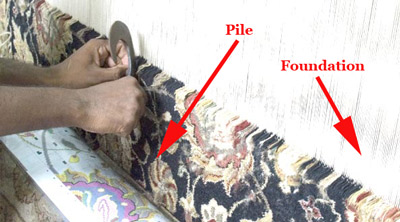
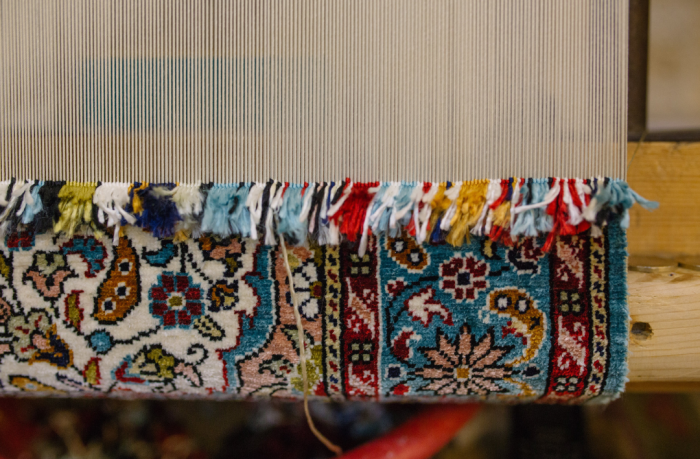
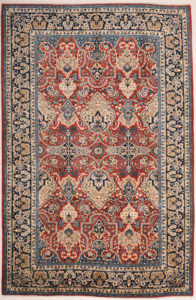
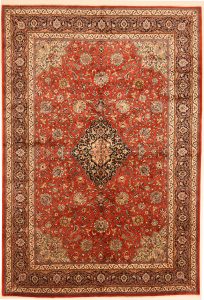
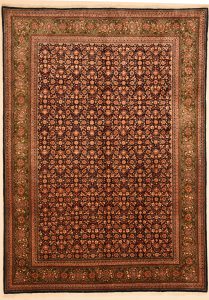
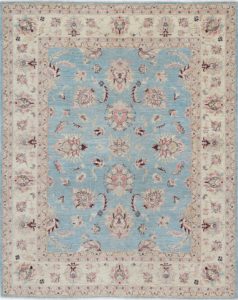
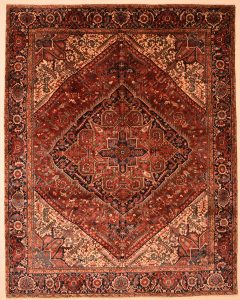
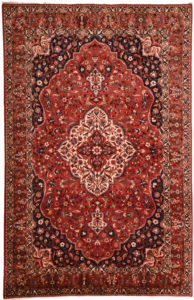
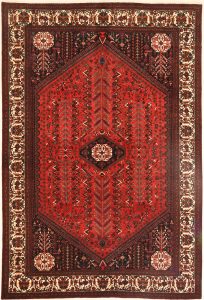


4 thoughts on “Why Rug Pile Height Matters”
Hi? Is it best to paint room before installing carpet.,#2 I’m looking to install shag/w a great pad underneath. Which type pad is recommended. I’m divorced and a senior but redecorating I’m just a lost. Oh in living room/dinning and stairs. #3 can carpet and couch be same color.( White or off white shag, cream couch) gray walls).
Dear DeOan,
Yes, it is good idea paint the room first. I don’t have any ideas about padding for Shag /W. I think it is good to use matching colors instead same color.
This video was so helpful!!! Do y’all have a tiktok? I would love to follow along for more tips and info like this
We don’t have tiktok yet, but you can see all of our video on YouTube channel @CatalinaRug